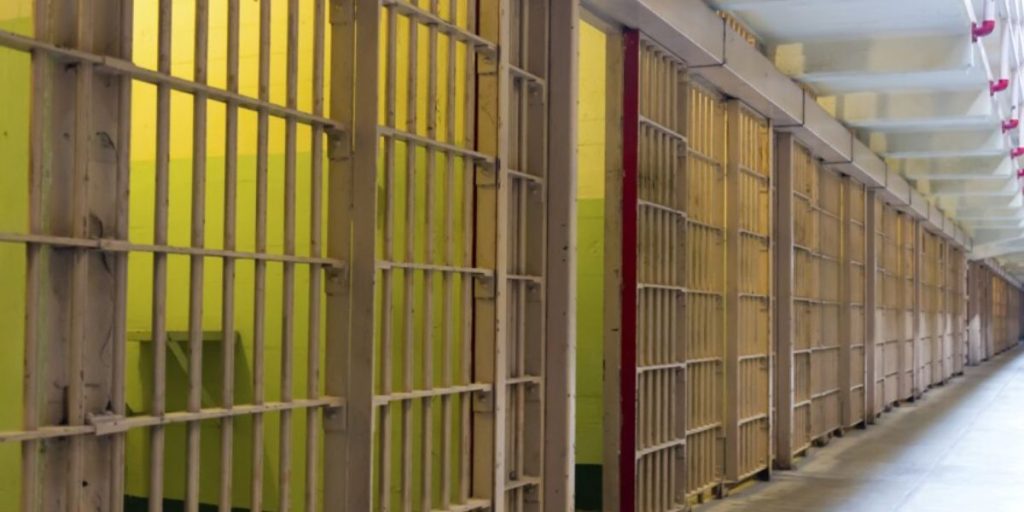Kentucky, a state renowned for its natural beauty and cultural heritage, is also home to several correctional facilities that have garnered a darker reputation. Among its numerous prisons, seven stand out for their troubling histories, marked by allegations of inmate abuse, violence, and mismanagement.
These institutions have made headlines over the years for incidents that highlight the harsh realities within the state’s prison system. From overcrowded conditions to security lapses, these prisons have developed a notoriety that reflects broader challenges in corrections.
In this piece, we explore the seven Kentucky prisons with the most grim reputations.
Green River Correctional Complex
Green River Correctional Complex is a Kentucky state prison in Central City. It opened in 1994 and housed 982 convicts in 2007. The Kentucky Justice and Public Safety Cabinet, Department of Corrections, runs this medium-security adult male prison. With 250 acres (1.0 km2) and 254 workers, the prison houses inmates for $11,710.79 per year.
Three medium security general population housing units have 444 double bunk cells, one maximum security segregation unit has 44 single bunk cells, and a fifty-bed open dorm-style minimal security unit.
The worst US jail is Green River Correctional Complex (GRCC) for various reasons. First, the prison is overcrowded and understaffed. Violence, filthy conditions, and inmate insecurity have resulted.
GRCC’s remote location makes it hard for prisoners to get visits or outside support. Isolation can worsen inmates’ difficulties, making prison life harsher.
Kentucky State Reformatory
Adult males live in the medium-security Kentucky State Reformatory (KSR). The penitentiary is in unincorporated Oldham County, Kentucky, near La Grange and 30 miles northeast of Louisville. The Kentucky State Penitentiary in Frankfort was destroyed by floods, so KSR replaced it in 1940. In 2020, KSR can host 1053 prisoners.
Kentucky State Penitentiary inmate Jerald L. Kendrick filed a 40-page lawsuit in the US District Court for Paducah on August 25, 1976. Kendrick et al. vs. Bland and Thompson et al. involved David H. Bland’s exploitation of state employees who worked on his campaigns.
Michael Carneal, Harry Edward Greenwell, Steve Nunn, Louie B. Nunn, Gary Scott Pennington, and Dustin McPhetridge are famous prisoners.
Read More: Hurried Escape from Kentucky: 5 Towns People Are Leaving Behind
Luther Luckett Correctional Complex
Kentucky’s Luther Luckett Correctional Complex is a state prison in Oldham County. It began in 1981 and housed 1,204 prisoners in 2018. Although independent, the Kentucky Correctional Psychiatric Center shares numerous facilities with the Luther Luckett Correctional Complex.
The prison is overcrowded and understaffed. Conditions within Luther Luckett make it America’s worst prison. The walls and ceilings are covered in mold and mildew, making the facility unclean.
The facility runs two 12-hour shifts five days a week due to major manpower shortages in 2015–16. This has been seen as an increase in income and strongly opposed by others due to their families’ frequent absences and mental and physical stress.
Kentucky State Penitentiary

The Kentucky State Penitentiary, often known as the “Castle on the Cumberland,” is a maximum-security and supermaximum prison with 856 inmates located 4.8 kilometers (3 miles) from downtown Eddyville on Lake Barkley along the Cumberland River.
The Corrections Department runs the Kentucky State Penitentiary at Eddyville. Kentucky’s oldest and only Commonwealth-owned jail. The prison houses Kentucky’s execution facility and male death row convicts.
In 2015, the institution employed 350 people and spent $20 million. Most offenders are brought to the jail from less guarded state prisons for violent or disruptive behavior.
Kentucky Correctional Institute for Women
The Kentucky Department of Corrections operates the Kentucky Correctional Institution for Women (KCIW) in unincorporated Shelby County, Kentucky, near Pewee Valley. Before 1937, male and female inmates were imprisoned at Frankfort’s Kentucky State Penitentiary (1912 name changed to Kentucky State Reformatory).
State prison guards James Johnson, Demar Jones, and Shane Fisher were convicted of sexually abusing and assaulting detainees. The institute employs more men than women.
Also Read: Opioid Crisis: This City Holds the Distinction of Being The Drug Overdose Epicenter of Kentucky
Studies show male coworkers have harassed female correctional personnel. Correctional staff make nearly 15% of Kentucky state workers but almost 50% of sexual harassment allegations.
Western Kentucky Correctional Complex
In October 2019, the Western Kentucky Correctional Complex (WKCC) near Fredonia had 693 inmates—493 men and 200 women. Segregated, dual-sex, medium-security WKCC located in Lyon County, Kentucky.
The Western Kentucky Farm Center was created in 1968 to house KSP workers on farms and ranches outside the facility. It separated in 1977. The minimum-security prison has under 100 beds. WKCC added medium-security elements in 1989 after becoming the Western Kentucky Correctional Complex.
Poor conditions, lousy food, and violent inmates make this place known. Poor conditions at Western Kentucky Correctional Complex. Since the prison is the largest in the state, the cells are overcrowded and dirty. Escape attempts by convicts aren’t surprising.
United States Penitentiary, Big Sandy
USP Big Sandy is a high-security federal prison for men in unincorporated Martin County, Kentucky, near Inez. The US Department of Justice’s Federal Bureau of Prisons runs it.
USP Big Sandy is in eastern Kentucky, 133 miles from Lexington, 140 miles from Frankfort, and 320 miles from Washington, DC. Another area houses a minimum-security male inmate satellite camp.
Big Sandy is one of the worst US prisons due to its high violence rate. Prisoners often dread attacks from fellow convicts or guards. Prison inmate riots and uprisings have caused property damage and injuries.
Last Words
The bad reputations of these seven Kentucky jails are a stark reminder of the problems that the state’s prison system still has. Even though reforms have been tried, stories of violence, abuse, and overcrowding continue to cast a shadow over these places.
To fix the deep-seated problems in these prisons, we need to make systematic changes and a dedication to making things better for both inmates and staff. Until then, these jails will always represent the worst parts of the criminal justice system, where survival is more important than rehabilitation.